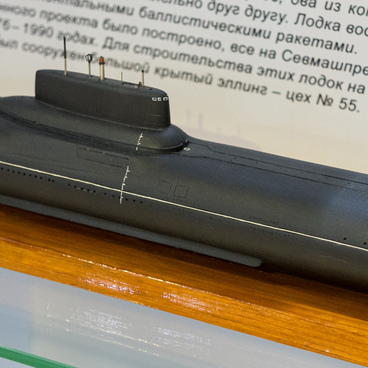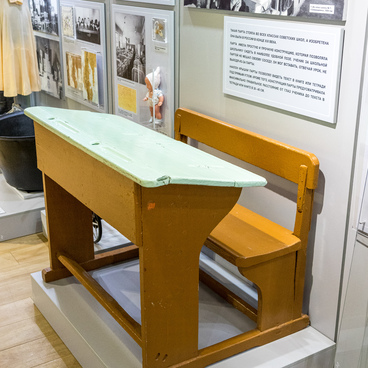Many visitors to the Severodvinsk Museum are nostalgic about this route board from the suburban train ‘Arkhangelsk — Molotovsk’. From 1938 to 1968, the railway was the only year-round transport link between Molotovsk (as Severodvinsk was then called) and the regional center.
The laying of the first narrow-gauge, and then of the ordinary railway in 1936–1938 was associated with great difficulties. In 1938, the passenger service of a suburban train on the Molotovsk-Arkhangelsk route was established. But the trains did not come to the regional center itself, but to the opposite from Arkhangelsk, the left bank of the Northern Dvina. Then from the train, passengers were transferred to steamers, or walked across the river on ice.
Until the late 1960s, a commuter train from Severodvinsk to neighboring Arkhangelsk ran four times a day. From the timetable it was possible to find out that ‘Suburban trains Molotovsk — Arkhangelsk depart daily from Molotovsk at 3.40, 9.50, 16.56 and 21.32. From Arkhangelsk to Molotovsk at 0.40, 6.50, 13.55, 18.24. The travel time is 2.5 hours.’ Information plates were attached to the carriages of passenger trains. The plate indicated the direction of travel and helped passengers navigate the train station and stations when boarding the car.
In the second half of the 20th century, such metal plates were covered with white enamel, and the text was highlighted in black. In such a contrasting design, the inscription was clearly visible from a long distance.
This board was removed in 1989 from an abandoned carriage sitting on the sidings of the Severodvinsk station. The name of the city suggests that the plate was used until 1957 — in September 1957, it was decided to rename Molotovsk to Severodvinsk and the route boards were quickly replaced.
In 1964, a railway bridge was built across the Northern Dvina, and it became possible to get directly to the center of Arkhangelsk by train. When in 1968 Arkhangelsk and Severodvinsk were connected by a road, the travel time was cut in half, and the need for a ‘duty room’ disappeared.
The laying of the first narrow-gauge, and then of the ordinary railway in 1936–1938 was associated with great difficulties. In 1938, the passenger service of a suburban train on the Molotovsk-Arkhangelsk route was established. But the trains did not come to the regional center itself, but to the opposite from Arkhangelsk, the left bank of the Northern Dvina. Then from the train, passengers were transferred to steamers, or walked across the river on ice.
Until the late 1960s, a commuter train from Severodvinsk to neighboring Arkhangelsk ran four times a day. From the timetable it was possible to find out that ‘Suburban trains Molotovsk — Arkhangelsk depart daily from Molotovsk at 3.40, 9.50, 16.56 and 21.32. From Arkhangelsk to Molotovsk at 0.40, 6.50, 13.55, 18.24. The travel time is 2.5 hours.’ Information plates were attached to the carriages of passenger trains. The plate indicated the direction of travel and helped passengers navigate the train station and stations when boarding the car.
In the second half of the 20th century, such metal plates were covered with white enamel, and the text was highlighted in black. In such a contrasting design, the inscription was clearly visible from a long distance.
This board was removed in 1989 from an abandoned carriage sitting on the sidings of the Severodvinsk station. The name of the city suggests that the plate was used until 1957 — in September 1957, it was decided to rename Molotovsk to Severodvinsk and the route boards were quickly replaced.
In 1964, a railway bridge was built across the Northern Dvina, and it became possible to get directly to the center of Arkhangelsk by train. When in 1968 Arkhangelsk and Severodvinsk were connected by a road, the travel time was cut in half, and the need for a ‘duty room’ disappeared.



